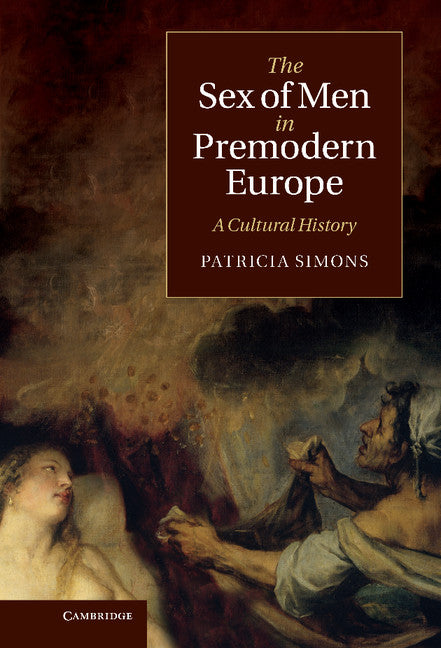Freshly Printed - allow 8 days lead
Couldn't load pickup availability
The Sex of Men in Premodern Europe
A Cultural History
A richly textured cultural history that investigates the characterization of the sex of adult male bodies before the Enlightenment.
Patricia Simons (Author)
9781107004917, Cambridge University Press
Hardback, published 13 October 2011
344 pages, 61 b/w illus.
23.1 x 15.5 x 2.3 cm, 0.63 kg
'A thought-provoking and important study of the premodern European perceptions of the sexed (male) body that provides critical insights on sex and gender not only for the scholars of early modernity but for anyone concerned with bodies and gender, past or present.' Council for European Studies
How were male bodies viewed before the Enlightenment? And what does this reveal about attitudes towards sex and gender in premodern Europe? This richly textured cultural history investigates the characterization of the sex of adult male bodies from ancient Greece to the seventeenth century. Before the modern focus on the phallic, penetrative qualities of male anatomy, Patricia Simons finds that men's bodies were considered in terms of their active physiological characteristics, in relation to semen, testicles and what was considered innately masculine heat. Re-orienting attention from an anatomical to a physiological focus, and from fertility to pleasure, Simons argues that women's sexual agency was perceived in terms of active reception of the valuable male seed. This provocative, compelling study draws on visual, material and textual evidence to elucidate a broad range of material, from medical learning, high art and literary metaphors to obscene badges, codpieces and pictorial or oral jokes.
Introduction
Part I. Witnessing Men's Bodies: Paradigms Old and New: 1. How to be a man in early modern Europe
2. The phallus: history and humour
3. Material culture in late medieval and early modern Europe
Part II. Projecting Male Sex: Models and Metaphors: 4. Physiology and anatomy
5. Value and expenditure
6. Pleasure and the unequal two-seed theory
7. Fertility and beyond
8. Implements in action
Conclusion.
Subject Areas: History of medicine [MBX], Gender studies: men [JFSJ2], Early modern history: c 1450/1500 to c 1700 [HBLH], European history [HBJD]


